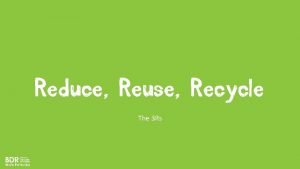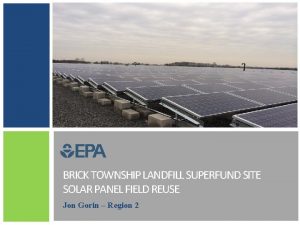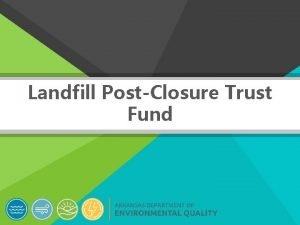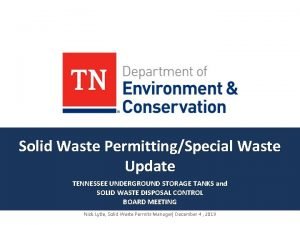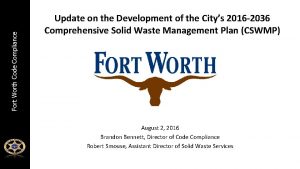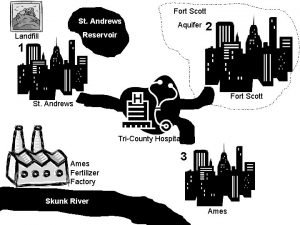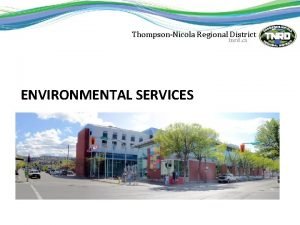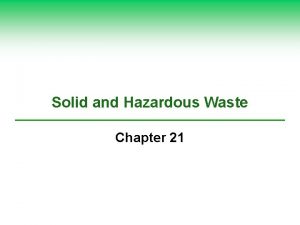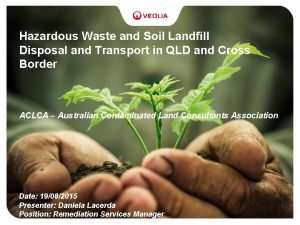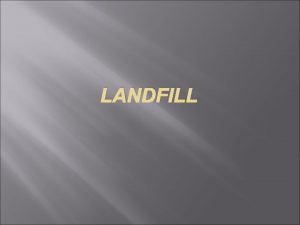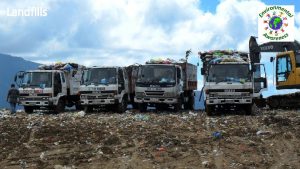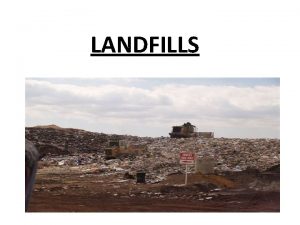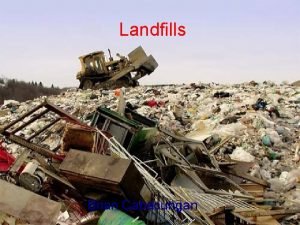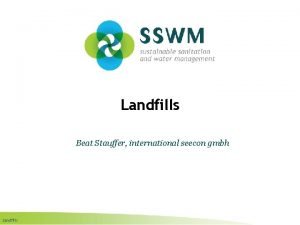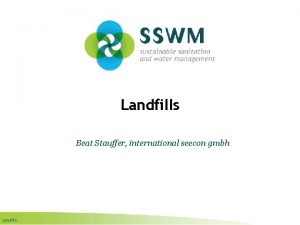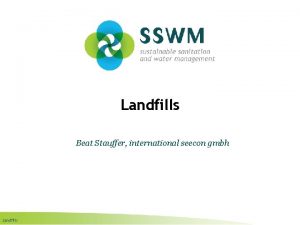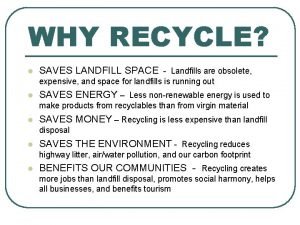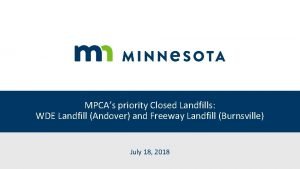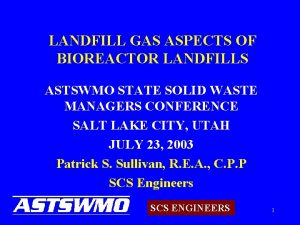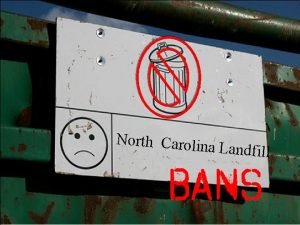LANDFILLS Landfills A landfill is an area of












- Slides: 12

LANDFILLS

Landfills • A landfill is an area of land where wastes are placed for permanent disposal. • Most of our waste goes into a landfill

Landfills • Landfills must contain the waste that is buried inside and keep it from causing problems with the environment. • Waste inside a landfill must not come into contact with the soil and groundwater surrounding the landfill. • Landfills are maintained by covering wastes each day with a layer of soil, plastic, or both.

Problems with Landfills • Leachate is a liquid that has passed through solid waste and has extracted dissolved or suspended materials from waste, such as pesticides in the soil. • Leachate is a problem for landfills because it may contain chemicals from paints, pesticides, cleansers, cans, batteries, and appliances. • If landfills are not monitored properly, leachate can flow into groundwater supplies and make nearby wells unsafe to drink.

Problems with Landfills • Methane, a highly flammable gas, presents another problem for landfills. • Methane forms as organic wastes decompose deep in the landfill where there is no oxygen. • Methane gas can be pumped out of landfills and burned to generate electricity. • If methane gas production is not monitored safely, it may seep through the ground and into basements of homes and cause explosions.

Parts of a Modern Landfill

Safeguarding Landfills • The Resource Conservation and Recovery Act, passed in 1976 and updated in 1984, requires that new landfills be built with safeguards to reduce pollution problems. • New landfills must be lined with clay and a plastic liner and must have systems for collecting and treating leachate, as well as vents to carry methane out of the landfill. • Adding safeguards to landfills, however, increases the cost of building them. Also, finding acceptable places to build landfills is difficult.

Building More Landfills • We are currently running out of space that we are willing to develop for new landfills. • The materials we bury in landfills are not decomposing as fast as we can fill landfills. Even biodegradable materials, like newspapers, take several years to decompose.

Building More Landfills The EPA estimates that active landfills in 20 states will be filled to capacity within 20 years.

Incinerators • In 1999, the U. S. had 102 operational incinerators that were capable of burning up to 94, 000 metric tons of municipal solid waste per day. • Incinerators are one option for reducing the amount of solid waste in landfills. • Incinerated materials do not disappear, but the weight of solid waste is reduced.

Incinerators • Incinerated materials can be more toxic than before it was incinerated. • Special air pollution control devices help control the amount of toxins released into the air. • However, even incinerators with these special air pollution control devices release small amounts of poisonous gases and particles of toxic heavy metals into the air.

Incinerators
